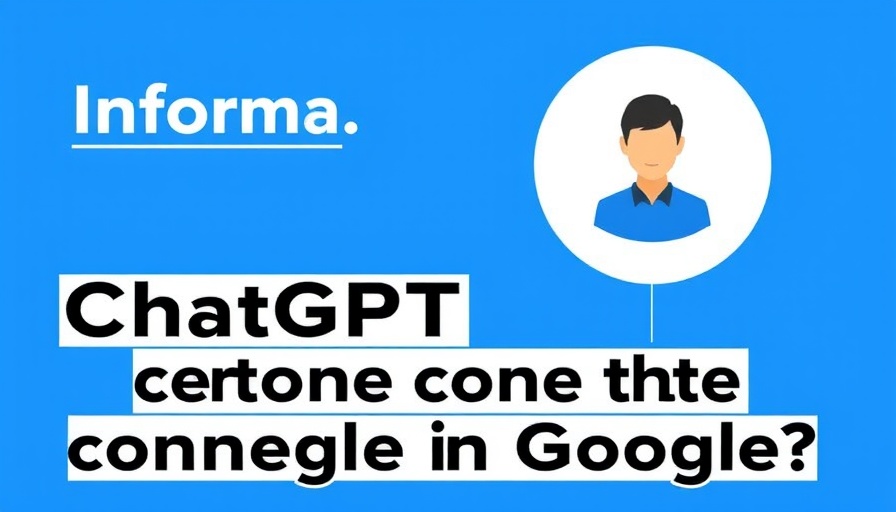
The Mystery of ChatGPT's Data Sources
OpenAI's ChatGPT has been the subject of great scrutiny, especially regarding its data retrieval methods. Initially, many believed that ChatGPT leaned heavily on Microsoft Bing, thanks to the company's partnership with Microsoft. However, a recent analysis of 118,931 fan-out queries has revealed something different—ChatGPT appears to use a more complex, multi-source approach instead.
Diving Into the Data: What Was Analyzed?
To get to the bottom of this, data scientist Xibeijia Guan pulled actual search queries from ChatGPT, analyzing both the prompts and the URLs they returned. The assessment compared those results against searches conducted directly through Google. This thorough examination highlighted how ChatGPT could be utilizing several platforms rather than relying solely on one.
Understanding the Retrieval-augmented Generation (RAG)
On average, ChatGPT generates approximately 1.78 search queries per prompt, predominantly returning two searches for 75% of the queries. However, the overlap with Google search results is notably low: only 6.82% of results were found in Google’s top 10, and a mere 16.61% appeared in any of Google’s search result pages. This disparity suggests that it is unlikely ChatGPT is predominantly powered by Google.
What Does This Mean for Users and Developers?
From a user’s perspective, this blended approach means that ChatGPT is not just pulling information from Google or Bing—it is aggregating data from various sources, including third-party APIs and its own index. This likely enhances the system’s ability to provide accurate, contextual answers rather than generic information available through standard searches.
The Implications of a Multi-Source Strategy
As OpenAI seeks to refine the quality of responses from ChatGPT, using a hybrid model could serve multiple strategic purposes. Not only does it lessen dependence on any single search engine, but it also allows for a broader context in providing information, ultimately delivering richer interactions for users.
Future Considerations: What Lies Ahead for AI and Search?
As the landscape of AI and search technology evolves, the need for transparency in how data is sourced will become increasingly crucial. OpenAI’s findings could spur other tech companies to consider similar multi-source strategies to enhance their own offerings, ultimately fostering innovation in AI-assisted search functions.
While there is no conclusive evidence that supports ChatGPT being “Google-powered,” the insights gathered offer a glimpse into how large AI models will operate in the future. For those in digital marketing or technology sectors, understanding these nuances can help in developing better strategies for leveraging AI tools.
Conclusion: Embracing Complexities in AI
As we continue to navigate the nuances of AI and its capabilities, it remains essential to approach these technologies with a critical lens. ChatGPT’s sophisticated architecture exemplifies the intricate dance between AI and traditional search engines, paving the way for a future that prioritizes depth and accuracy in information retrieval.
 Add Row
Add Row  Add
Add 




Write A Comment